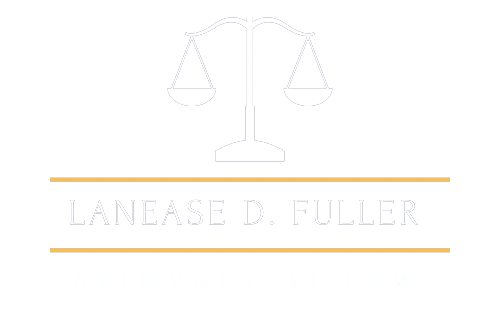When you decide to open a business, you will need to decide on a legal structure for your company. This will determine many things, primarily how you file your taxes. While it is possible to change your business structure down the road, it is best to speak with an attorney ahead of time to save yourself the headache and paperwork. In this article we will share information about different business structures and how to change them if you decide to do so.
Different Business Structures You May Choose
A Sole Proprietorship
The major advantage of a sole proprietorship is that it’s the simplest and least expensive structure to form. There’s really nothing to set up and maintain, except perhaps a fictitious business name, referred to as a DBA, or “Doing Business As” name.
An individual owner of an unincorporated business operates the business as an extension of themselves. The profits and losses of the business are reported on the tax return of the owner, and that owner is personally responsible for any liabilities of the business. A court can directly levy the personal bank account and other property of the owner if anyone successfully sues the business for breach of contract, personal injury, or to collect a debt.
A General Partnership
An advantage of a partnership is that, like a sole proprietorship, no state filings are required to create the business entity. Nor are there any ongoing reporting requirements.
Two or more people own the business jointly in a general partnership. They share the profits and losses of the business as spelled out in the partnership agreement. Each partner is potentially responsible for the full amount of the business’s liabilities. A creditor of the business can collect the full amount of a partnership debt from the partner that’s easiest to collect from.
Distribution of profits and losses is determined by the partnership agreement and passes through to the individual partners. It doesn’t have to match the ownership percentages. The partnership itself isn’t subject to any income or franchise tax.
A Limited Partnership
The basic structure and tax implications of a limited partnership are the same as for a general partnership, but a limited partnership allows for one or more limited partners called “silent partners” to own a portion of the business. Silent partners can’t participate in the management of the business.
This type of partnership must also have a general partner who has personal liability for all liabilities of the partnership. This structure allows a partnership to have outside investors without subjecting them to the liabilities of the business.
A Limited Liability Partnership (LLP)
The LLP came about as a result of demand from attorney and accounting firms who wanted to be able to limit the liability between partners. These firms were not allowed to incorporate at one time. An LLP is taxed like a partnership, but it limits the liabilities of all partners, much like an LLC.
Limited liability partnership laws can vary significantly from state to state. California and New York allow this form of business structure only for attorney and accounting firms. Partners in an LLP only have a “limited shield” in other states and aren’t afforded the same protection they would enjoy in an LLC or corporation.
A Limited Liability Company (LLC)
An LLC is a hybrid of a corporation and a partnership, and it’s rapidly becoming the most popular structure for small businesses due to its flexibility. Its cost to create and maintain is low, while it still offers most of the advantages of a corporation. The ownership percentages, profit and loss distributions, and voting powers of each member are determined by the LLC Articles of Organization, rather than by stock ownership.
An LLC can choose to be taxed as a partnership or as an S Corporation with profits and losses flowing through to the owners’ tax returns, or taxed as a C Corporation, filing its own return.1 The owners, officers, and directors are protected from the liabilities of the company, as in a corporation.
A C Corporation
The term “corporation” generally refers to a C corporation. A corporation is owned by one or more stockholders. It’s managed by a board of directors who are elected by the stockholders and it’s run day-to-day by officers who are appointed by the board of directors. A single individual can be the sole stockholder, director, and officer of the company.
The stockholders, directors, and officers are protected from the liabilities of the company, including liabilities for their own negligence when acting in their corporate role, except in certain extraordinary circumstances.
The profits and losses of the corporation typically are not passed through to the tax returns of the owners. The corporation files its own tax return and it pays its own taxes. It may also be subject to state franchise taxes or other annual fees. Corporate income tax rates are graduated based upon the taxable income as they are for individual taxpayers, but the rates and levels of the brackets are different.
An S Corporation
The Stockholders can elect “S Corporation” status after the corporation has been formed by making a filing with the IRS. An S Corporation is taxed as a partnership, and its profits and losses flow through to the federal tax returns of the owners in proportion to their stock ownership.
The S corporation structure is generally preferred over a standard corporation when most of the shareholders are employed by the corporation or are otherwise involved in its day-to-day activities. The corporation distributes most of its income to its shareholders each year.
The Non-Profit Corporation
A non-profit corporation may be an industry association, a social organization, a research firm, or even a consulting group. It can sell products or services. The difference is that there are no owners, and any “profits” are simply retained by the corporation to be reinvested for whatever the purpose of the corporation may be.
A non-profit can have employees, and these employees can be paid fair market value for their services. There are many restrictions on non-profits that make it a challenging choice, but it’s an option if you’re interested in seeing your vision come to life.
Professional Corporations, Professional Associations, and Professional LLCs
These are special entity forms created for lawyers, doctors, CPAs, architects, engineers, and other professionals who are subject to licensing requirements and malpractice liability. They’re similar to the standard forms, except that the appropriate state licensing body must usually approve the formation documents before they’re filed with the Secretary of State.
How Do I Change My Business Structure?
In order to change your business structure you will need to fill out all necessary legal forms and file them with the proper state officials. Once these documents have been approved you will also need to transfer all liabilities and assets to the new business entity. Working with an experienced business attorney can help small business owners protect themselves and properly change their type of business without error.
Attorney Lanease Fuller is dedicated to helping your business grow. She works with business owners to ensure they are filling all paperwork properly to be legal and in compliance with all state laws.
LANEASE D. FULLER LAW
4615 S. Frwy St. 820
Houston, TX 77051
713-439-7400
View our Google Listing


